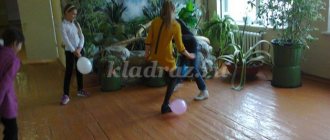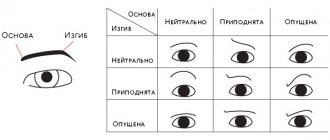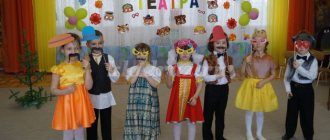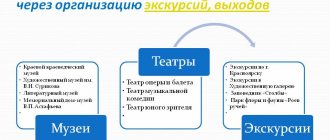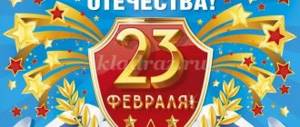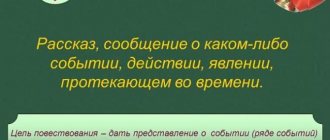Development of an extracurricular activity “Island Exploration”; 2-4 grade
By implementing a program of extracurricular activities, our school has introduced on-site educational programs into its practice. Their main advantages are the ability to organize work in groups of different ages and the use of extracurricular resources to expand the educational space. Such programs are held three times a year. Traveling for several days, a team of teachers implements various educational and practical tasks. In this article we would like to present our experience of conducting a project game for students in grades 2-4.
The main source of the idea for the game was the work of A.B. Vorontsov on the implementation of design tasks in school (“Project tasks in elementary school”, “Collection of design tasks” in 2 issues). Since the school operates according to a traditional program, all tasks are adapted for our students. When drawing up the game program, we adhered to the following provisions:
- children from different classes work in a team;
- the adult does not participate in the work of the team, but is only an observer and expert. To ensure safety, there are observers “in the field” (the game was played outdoors, in an open, clearly visible space);
- assignments are based on school knowledge, but are presented in a non-traditional form, requiring the manifestation of such meta-subject skills as independence in decision-making, competence in problem solving, goal setting and planning, adjustment of an existing plan, and the ability to communicate.
It should be noted that after the game, teachers had a huge number of topics to discuss and plan their work (the game was held in early September). If our experience attracts someone's attention, we are open to cooperation.
Children's reviews.
It was very interesting at the intellectual game, because we were a friendly team, and we understood how important it is to act as a team. We became very friendly with each other and were like a family, and the older ones helped the younger ones.
The trip was wonderful!
Lisa
It was difficult, but interesting at the Academy of Sciences, because we, like real researchers, were obtaining information about the island.
Egor
We also played a game, that is, something mixed between a game and a task. It was interesting and a little difficult.
Fedya
I am glad that our team completed all the design tasks of the intellectual game. We all worked together and amicably.
It's great that I went to Pokrovskoye, because I love to learn new things.
Matvey
Project task ISLAND EXPLORATION (grades 2-4)
- START (team lists, island map)
“Recently, a photograph of a previously unknown island in the Mighty Ocean was taken from an artificial Earth satellite. Scientists asked the question: what is it like? Is there vegetation and animals there? Do people live there? What are the weather conditions? An expedition of the Academy of Sciences was organized to explore the island. Several teams landed on shore and began exploring the island.
As you might have guessed, you will become these researchers. Now you see a map of the island in front of you. After your research, it will be filled with information that will allow people to get to know its inhabitants.
The task before you is not easy. You will benefit from the knowledge gained at school, ingenuity and intelligence, mutual assistance and the ability to work in a team.
Each team will receive a route for their expedition, consisting of three stages. At each stage you will be able to obtain information about the island. Write it down on special cards, which you will place on the map of the island at the end of the expedition.
You will work completely independently. The expert who meets you at the stage will not explain anything, much less give you any hints. He voices the task and checks it. You will be given two attempts to correct errors. Each team will receive 3 cards with a question mark, which means that during the game you can ask three questions to the experts.
So, let's get to work. Be attentive, ask each other questions, explain anything you don’t understand, work together. You will succeed!"
- GAME (the first task is training, the second is final, by completing which students receive information about the island). The expert has a sheet of observations of the group’s work (Appendix 1).
Full text of the material Development of an extracurricular activity “Island Exploration”;
For grades 2-4, see the downloadable file . The page contains a fragment.
| Author: Pitinova N.N., Maykova A.G. → Publisher 06.11.2015 0 2521 297 | Comment |
Thank you for your mark. If you want your name to be known to the author, log in to the site as a user and click Thank you again. Your name will appear on this page.
Login | Registration
Have an opinion? Leave a comment
Project task
Martynova Svetlana Grigorievna, primary school teacher,
MBOU "Ocherskaya Secondary School No. 1"
“Description of the project task “ Fauna”
"for students in grades 2-4"
Project task “ Animal world”
» developed with the aim of introducing students to the world around them. During the project task, the interaction of students when working in a small group is assessed through expert observation and is compiled in the form of an expert sheet, which records the actions of students in the process of solving the problem and makes a general conclusion about the level of work in a small group .
| Name of the project task | Issue of the newspaper “ In the World of Travelers ” on the topic “ Animal World ” |
| Item | The world around us, literary reading, Russian language, mathematics. |
| Class | 2, 3, 4 |
| Task type | Interdisciplinary project for different ages |
| Goals and pedagogical objectives (pedagogical intent) |
Multi-age student collaboration. 2. Assessing the level of formation of group forms of educational cooperation during various stages of solving the task |
| Knowledge, skills and methods of action on which the task is based | The world:
Russian language:
Literature:
Mathematics:
|
General academic skills:
| |
| Planned pedagogical result | Student demonstration:
skills, working in a small group of different ages, to create the final “product” - an illustrated issue of the newspaper “In the World of Travelers”, which reflects the animal world. |
| Method and format of performance evaluation | In the process of solving the problem, the following is assessed: • students' knowledge of the necessary subject material; • the ability to correctly perform individual tasks and use them to build a solution to the problem as a whole; • ability to interact in a small group when solving a common problem. The assessment of student interaction when working in a small group is carried out through expert observation and is issued in the form of an expert sheet, which records the actions of students in the process of solving a problem and makes a general conclusion about the level of work in a small group |
Instruction No. 1
Australia
Working with an article for a newspaper
There was a system failure in the information base of the travel company; the photo disappeared from the information sheets about the tourist.
Read the text of a newspaper article describing a tourist animal.
- Identify the animal.
- Choose a drawing.
- In the article, highlight a piece of text that will help you color the animal (cut out the necessary piece of text).
- Color the animal.
- Place the selected piece of text with a picture on the group sheet and stick it on.
Performers:
Full name _____________________________________________________
Full name _____________________________________________________
Instruction No. 2
South America
Working with geographic maps
- Look at the physical map of the hemispheres and determine the place of the continent on the contour map.
- Consider the color chart of accepted symbols for geographic maps.
- Color the continent on the outline map to match the physical map.
- Sign the mainland.
Performers:
Full name _____________________________________________________
Full name _____________________________________________________
Instruction No. 3
South America
Working with tables, graphs and calculations based on them.
The carrying capacity of the tour operator's aircraft is limited - up to 600 kg. Only four tourists can board the aircraft. Who?
- Consider the table of the mass of animal tourists.
- Calculate which of the animals will be able to make a tourist flight to Russia.
- Mark animals - tourists in the table with ticks
The tourist program includes a ski trip for guests, which can be done at temperatures not lower than -150C.
- Consider the temperature chart and determine a favorable day for a ski trip.
Performers:
- Full name _____________________________________________________
- Full name _____________________________________________________
Instruction No. 4
South America
There was a system failure in the information base of the travel company; the photo disappeared from the information sheets about the tourist.
Read the text of a newspaper article describing a tourist animal.
- Identify the animal.
- Choose a drawing.
- In the article, highlight a piece of text that will help you color the animal (cut out the necessary piece of text).
- Color the animal.
- Place the selected piece of text with a picture on the group sheet and stick it on.
Performers:
Full name _____________________________________________________
Full name _____________________________________________________
Expert sheet for assessing group work
| Criteria | Answers |
| Leader in the group (presence of a leader, his appearance spontaneously, by decision of the group, etc.) | |
| Interaction of group members during work (lack of interaction, discussion of their decisions, helping each other upon request) | |
| organization of work at the final stage (general discussion, presentation of results to each student, etc.) |
Animals
| Africa | okapi, elephant, lion, ostrich, fennec fox |
| South America | alpaca, spectacled bear, bison, anteater, tapir |
| Australia | Dingo, koala, emu, great red kangaroo, saltwater crocodile |
Literature:
1. Asmolov A.G. Formation of universal educational activities in primary school: from action to thought. System of tasks: a manual for teachers edited by A.G. Asmolov. M.: Education, 2011, -159s;
2.Vorontsov A.B. Project tasks in elementary school/A.B. Vorontsov et al. M.: Education, 2011, -196 p.
Application
Materials for the design task
Okapi
often called the forest giraffe, despite the fact that their neck is not long. Dense tropical forest is the animal's primary habitat. Okapi is a very unusual animal. They look like they are made from parts of different animals: the legs are zebra-like with black and white stripes, the head is gray, and the neck, body and round ears are brown. Okapi's tongue is blue and so large that they can even use it to clean their ears.
Its body length is about 2 m, weight - 230–240 kg, height at the withers - 140 cm. Moreover, males are smaller than females, and also differ from the latter by the presence of two short horns.
A slender muscular body, a long elastic neck, a small head and a very expressive look are some of the external features of the okapi. The animals' fur is short and velvety; in the light it shimmers beautifully in various shades, from reddish to dark brown. The okapi's muzzle is light, and its legs have dark, almost black stripes, similar to those of a zebra. Another unusual feature of the okapi is its incredibly long blue tongue for a vertebrate. Okapi uses it to wash its eyes and get suitable food, and also easily separates buds and leaves from branches.
African elephant
- a mammal of the elephant family of the order Proboscidea, lives only in regions of Africa. The largest of modern land animals.
The skin of elephants, with the exception of the back and sides, where it can reach 2-3 centimeters, is very sensitive, especially to the sun. This is why mother elephants often cover their cubs with their shadow. It is also why elephants cover themselves with mud.
On average, males weigh 5 tons, females - 3 tons, and shoulder height - 4 meters. Elephants have a massive build - a large head, with huge ears up to 1.5 meters long, a very short neck. The tail can reach a length of more than 1 meter. The color of the skin is gray, the body is covered with sparse hair. The skin is wrinkled, rough, and the tusks are curved.
The elephant is amazingly agile, easy to move, fast without haste and swims beautifully. They move easily on sand and swampy terrain due to the peculiarities of the soles of their feet, which can narrow and widen. During walking, when the elephant stands on the ground, the soles expand and the area of contact with the surface increases. The forelimbs have 4 fingers, the hind limbs - 3.
The king of beasts is what the lion
. These are large animals with a cat-like build. Their fur has several shades of red and brown. As a rule, the back is brown, the sides are red, and the paws are almost yellow (or white).
The male is very different from the female, it is impossible to confuse them. Firstly, the female is much smaller in body size than the male. The male weighs approximately 200-230 kg, and the female no more than 150 kg. Moreover, the male has a body length of more than three meters, and the female does not grow more than two and a half meters. Secondly, males have a mane on their neck. This is what gives it a majestic, royal appearance.
Lions live in families called prides.
Ostriches
- inhabitants of open plains. They inhabit grassy savannas, dry woodlands and semi-deserts of Africa.
Ostriches are the largest birds: the average ostrich is 2.5 meters tall and weighs 120 kg. The ostrich has a small, flat head with large eyes equipped with eyelashes on the upper eyelid. The ears are open, bare, with a flat straight beak with a horny claw on the beak and two spurs on the wings. The mouth slit reaches the eyes.
Males are larger than females. Males have most of their plumage black, while the tail and wings are white. Females and juveniles are brown-gray in color, with off-white wings and tail. There is practically no feathering on the hips, head and neck. Females have pinkish-gray skin in these areas of the body, while males have gray, pink or blue-gray skin, depending on the subspecies.
Strong and long legs have 2 toes, one of which resembles a hoof. This finger bears the entire load when the ostrich runs. If necessary, the ostrich can run at a speed of 70 km/h
fennec fox
is a desert fox that differs from other species in its very small body size and large ears. The fennecfish lives mainly in the deserts of North Africa. The fennec fox is no larger than a regular cat. The body length is on average 35 centimeters, the tail length is 30 centimeters, the height of the animals is up to 25 centimeters, and the weight is only 1 kg 500 g.
The fennec fox has a small, pointed muzzle, large eyes, and small teeth. A characteristic feature of these foxes are their ears. They reach 15 centimeters in length. The fennec needs such large ears not only so that he can hear the slightest rustle nearby, but also to cool his body in a hot climate. The entire body of the desert fennec fox is adapted to high temperatures. Fennec foxes have hairy feet, which allows him to move calmly on hot sand. The fur of the fennec fox is thick and soft, light red in color.
Alpaca
- This is a very cute animal of the camel family. It lives in the highlands of the Peruvian Andes in South America. Living high in the mountains, where the temperature difference between day and night reaches 30 degrees, alpaca has warmer fur than other types of animals. The color range of alpaca wool is quite wide; about 20 shades can be distinguished - from pure white, traditional beige or silver - to brown and even black.
The alpaca does not have front teeth, so the animal is forced to collect food with its lips and chew it with its side teeth. Alpaca is very inquisitive, good-natured and intelligent. The animal's height reaches 86 cm, and its weight ranges from 45 to 77 kg.
Spectacled bear
is the only representative of the bear family living in South America. It lives mainly in mountain forests (at an altitude of up to 3,000 m) on the western slope of the Andes, but often appears on open meadow slopes and even in low-lying savannas and bushes.
The biology of the spectacled bear is poorly studied. These are nocturnal and crepuscular animals that do not hibernate (although they can make dens for themselves).
This animal is of medium size: its body length is 150-180 cm, its tail is 7-10 cm, its shoulder height is 75-80 cm; weighs from 70 (females) to 140 (males) kg. The fur is shaggy, coal-black or black-brown. There are white or yellowish rings around the eyes (hence the name), connecting to a white semicircle on the throat. However, some individuals have no spots. The muzzle is shorter than that of other bears. Lives up to 21 years. The number of spectacled bears is low (an endangered species), they are listed in the Red Book of the International Union for Conservation of Nature.
American bison
- belongs to bovid (hollow - empty) mammals. These bulls are distinguished by their impressive size and massive physique. In appearance, the bison is similar to the bison. It is huge in size and very strong. The height of the animal at the withers is 1.8-2 m, the body length is 2.5-3 m. Male bison weigh about 1.2 tons. In terms of size, female bison are inferior to males, their weight reaches 700 kg.
The bison's body is densely covered with gray hair with a brown tint. The color of animals can vary from light red to dark brown, almost black.
The hair on the head, chest and beard is longer and darker than on the rest of the body. The animal's head is massive, with a pronounced wide forehead, on both sides of which there are thick short horns. They diverge to the sides at the base of the head, and their ends are bent inward. The animal's ears are small and narrow; the neck is massive, short; the eyes are large and dark in color. A characteristic feature of the bison's structure is the hump on the back of the neck. The front part of the animal's body is well developed, the back is much weaker. The bison's legs are squat, but strong. The tail is short, with a tassel at the end.
Ant-eater
- an amazing mammal that lives in the savannas and tropical forests of South America.
Anteaters have characteristic tube-shaped snouts with a small mouth slit and a long, 60 cm sticky tongue covered with sticky saliva. They use it to get termites, ants, bees and beetle larvae. They can also satisfy their hunger with wild berries, picking them with their lips. He has a good sense of smell, but his vision and hearing are very poorly developed.
The weight of an adult giant anteater is up to 40 kg, the total body length from the nose to the tip of the tail is about 2 m 30 cm. The fluffy tail, compressed from the sides, reaches 100 cm.
Anteater fur
has a silver-gray color, darker in places, and completely black on the sides of the chest. The fur is elastic and hard, and the length of the hairline increases towards the tail: the head is almost devoid of vegetation.
All anteaters are slow animals - close relatives of sloths and armadillos. They become frequent prey for poachers. The giant anteater is listed in the International Red Book as a species that is threatened with extinction.
In the language of one of the South American tribes, tapir
- means “fat.” This is what the local Indians called the tapir because of its thick skin. Body length 180-200 cm, tail length 5-10 cm, height at withers 75-120 cm. Weight 225-300 kg. The physique is heavy. The body is rounded at the top and tapers in front, with a short, as if chopped off, tail. The limbs are short and thick. The hooves are small oval. The eyes are small. The ears are short, rounded, and inactive. The muzzle ends in a small movable proboscis formed by the nose and upper lip, used to capture leaves, aquatic plants and succulent shoots. The nostrils open at the end of the trunk. Small eyes, round, protruding ears
This animal combines the features of a horse and a rhinoceros. Like a horse, the tapir has hooves, and some species have a small mane. The entire body is covered with thick short fur. The body color is one color - dark brown or reddish on the dorsal side and light on the ventral side.
Tapirs are skilled swimmers and divers; they can stay under water for a long time, escaping persecution in a river or lake.
Most tapir species are listed in the Red Book, as the number of these animals has recently decreased significantly due to hunting and deforestation.
On right
Signs that affect the weather:
Weather is a change in the characteristics of the lower layer of the atmosphere.
The atmosphere is the shell of air surrounding the Earth.
It is known that the surface of the Earth is heated unevenly, and the degree of its heating depends on the height of the Sun above the horizon. In addition, different parts of the Earth warm up differently.
There is a constant exchange of moisture between the surface and the atmosphere. Evaporating from the surface of the oceans, water vapor rises upward with upward movements of air.
Weather changes are associated with the movement of the Earth around the Sun and its axis. These are changes in air temperature and humidity, wind direction, etc.
Air masses move due to air pressure differences. In a cold air mass, the air is denser, and therefore the atmospheric pressure increases after the passage of a cold front. The air is moving. We feel this movement in the form of wind. Wind is a powerful, all-encompassing natural phenomenon. So, wind arises due to differences in air pressure. Expert sheet for assessing group work
| temperature date February | ||
Expert's FI _____________________________________ Group No. _____________
| Questions | Answers |
| How did the group start working (they immediately began to complete tasks; first they became familiar with all the tasks, etc.)? Please describe in more detail. | |
| How and at what stage was work distributed among group members? | |
| How were the transitions from one model to another carried out when measuring strips of the required length? Describe in more detail, including all group members. | |
| Which of the participants, when laying the resulting figures according to the assembly drawing, returned to the models from task 1 and measured the value again? | |
| Was there a leader in the group? If so, how did it appear (on its own initiative, spontaneously, by decision of the entire group, etc.)? | |
| How did the group members interact during the work (at all, discussed their decisions, helped each other when requested, etc.)? | |
| How was the work organized at the final stage - during assembly (general discussion, everyone provided their results and they were not discussed by the group, etc.)? | |
| Describe the climate and relationships in the group (friendly atmosphere; mutual assistance; quarrels; no meaningful communication, etc.). If there were conflict situations, how were they resolved? | |
| Summarize your overall impression of the group’s work. |
